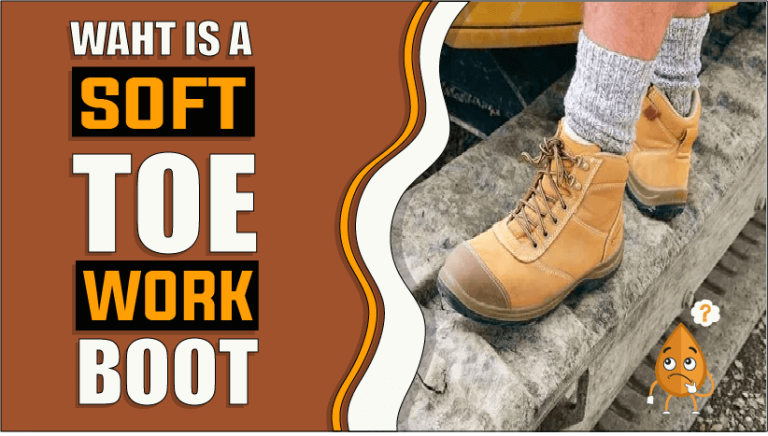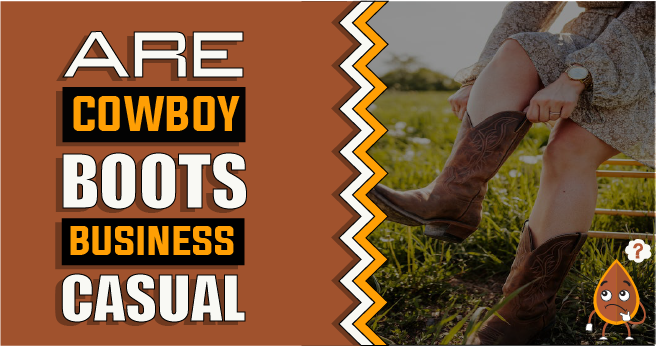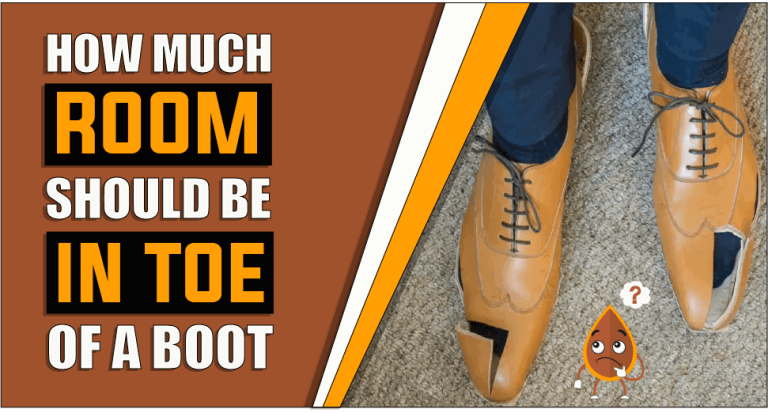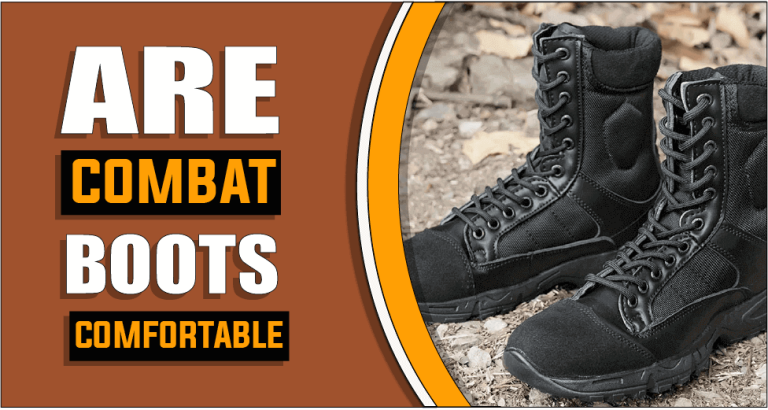What Are The Best Insoles For Work Boots?
If you require work boots at your job, you are likely to be standing for most of the day. Whether you’re working in a factory or office, running errands, or taking care of your kids, you’re likely on your feet for hours at a time. That’s why it’s important to have comfortable and supportive insoles, especially if you wear boots. Where a large part of comfort relies on the quality of the insole. If you’re in the market for new work boots, be sure to consider investing in a good pair of insoles. Insoles can provide additional cushioning and support to enhance the comfort of your boots. Choosing the appropriate insoles can be a challenge, given the wide range of styles and brands available. So, if you need a new insole for your work boots or just want to know more about what are the best insoles for work boots, keep reading for some useful tips!

Let’s discuss what are the best insoles for work boots
It might be challenging to determine which insoles are the best given the wide variety available on the market. To help you out, I’ve put together a list of the top 5 best insoles for work boots.
- Timberland Pro Anti-Fatigue Insole
This insole by timberland is a fantastic product with many features and advantages. The insole’s anti-fatigue technology and design are intended to support and cushion your feet while also preventing foot fatigue. This product is also machine washable, which makes it easy to care for. Overall, this Insole is a fantastic product with a lot to offer. It is comfortable, supportive, and has anti-fatigue technology that helps to reduce foot fatigue. Anyone seeking a replacement insole should consider this product, in my opinion.
2. Walk Hero Insoles
If you are looking for a plantar fasciitis insole that will provide you with the support and comfort you need, then you should consider the Plantar Fasciitis Feet Insoles. These insoles are designed to offer support for people who suffer from flat feet or high arches, and they can also help to relieve pain in the feet and ankles. The arch supports are constructed of a soft, pleasant material that will conform to the curve of your foot and give support for your foot’s arch while you walk or stand. The inserts also have a gel-like material on the bottom that helps to absorb impact and reduce friction, which can help to prevent blisters and calluses from forming on your feet.
3. Dr. Scholl’s Work Gel Insoles
If you’re looking for a little extra support for your feet, Dr. Scholl’s insoles Shoe Inserts might be just what you need. These shoe inserts feature gel cushioning that massages your feet as you walk, helping to relieve pain and fatigue. They also have arch support to help improve foot alignment and reduce strain on the feet, ankles, and knees. The result is increased comfort and stability whether you’re standing all day at work or walking for exercise. And since they’re built of sturdy materials, so you can count on them to withstand a lot of wear and tear.
4. Superfeet Green Premium U-Insole
The Superfeet GREEN insole is an excellent alternative if you’re looking for a high-quality orthotic insert. The contoured form of these inserts aids in stabilizing and supporting the foot, and the integrated arch support helps to lessen pain and tiredness. You may even see an overall improvement in your work performance thanks to its enhanced comfortable fit. These inserts are also made from durable materials that will hold up well to regular use, making them a great investment for your footwear.
5. Keen Utility Men’s K-20 Insole
If you are looking for an insole to help with your neutral arches, then the KEEN Utility insole is a great option. This insole’s exceptional arch support and cushioning relieve foot pain and discomfort. Those who spend a great deal of time on their feet might also benefit from the additional padding since it can relieve fatigue. The KEEN Utility insole is made from a high-quality material that is designed to last, and it comes with a money-back guarantee, so you can be sure that you will be happy with your purchase.
Choosing the right pair of insoles for your work boots can make a big difference in comfort and support. I hope this list of the top 5 best insoles for work boots has helped you find the perfect pair for your needs.
Different types of insoles for boots
Many different types of insoles can be used in boots. Some are designed to provide support and cushioning, while others are intended to improve the fit of the boot or add extra warmth. Here is a quick rundown of some of the most well-liked insole types:
Cushioned insoles:
These insoles are usually constructed of foam or other soft materials and are intended to give your feet more cushioning and support. They can help to reduce foot fatigue and pain, and they can also make your boots feel more comfortable.
Arch support insoles:
The purpose of these insoles is to provide additional support for your arches. They can help to reduce pain and fatigue, and they can also improve the fit of your boots.
Heel cups:
Heel cups are made to provide your heels with more padding and support. They can help to prevent heel pain and blisters, and they can also improve the fit of your boots.
Boot liners:
Boot liners are typically made from fleece or other warm materials, and they are designed to add extra warmth to your boots. They can also help to improve the fit of your boots and make them more comfortable to wear.
Supportive insoles:
These insoles usually have arch support or other types of support built into them. They are ideal for persons who have flat feet or high arches and want more support.
Orthotic insoles:
These are special types of insoles that are custom-made to fit your feet. They’re often used to treat specific foot conditions, such as bunions or hammertoes.
Boot inserts:
These are specifically designed to be used in boots. They typically have a thicker, more cushioned design than other types of insoles. In cold or damp conditions, boot inserts can help keep your feet warm and dry.
No matter what type of insole you choose, it’s important to make sure that it fits well in your boot. If an insole is too big or too small, it can cause problems such as blisters or rubbing. Regardless of the insole type you select, it’s critical to make sure it fits snugly inside your boot.
How to choose the right insole for your work boots
When you buy a new pair of work boots, they will come with an insole already installed. However, such an insole is not always the best one for your feet. It is often too thin and does not provide enough support. This can cause discomfort in the foot and perhaps injury if it continues, in the form of blisters. For this reason, picking the proper insole for your work boots is crucial. Here are a few things to keep in mind when making your selection:
1. Make sure the insole is thick enough to provide adequate cushioning for your feet. A thicker insole will assist you to avoid foot damage and absorbing impact.
2. Choose an insole that fits snugly inside your boot. A misfitting insole can produce painful pressure points by bunching up.
3. Ensure the insole provides adequate arch support. This will facilitate weight distribution and lessen foot fatigue.
4. If you have any specific foot problems, such as Plantar Fasciitis, choose an insole that offers additional support for those areas.
5. If you’ll be wearing your boots for long hours or doing a lot of walking, look for an insole with extra cushioning. Your feet will stay pleasant thanks to this even after prolonged use.
Take the time to find the right insole for your work boots and your feet will thank you for it. A good insole can make a big difference in foot comfort and overall fatigue levels.
The advantages of using the best insoles for work boots
There are many advantages to using the best insoles for work boots. Some of these benefits include:
- Comfort
When you spend long hours on your feet, comfort is key. The right pair of insoles can make a big difference in how comfortable your feet are at the end of the day.
- Support
If you have flat feet or low arches, the right pair of insoles can provide much-needed support. which will enhance your balance and assist in reducing foot and ankle problems.
- Protection
If you work in a hazardous environment, the right pair of insoles can help to protect your feet from potential injuries.
- Durability
When maintained properly, a good pair of insoles can endure for several years. This will save you money in the long term because you won’t have to replace them as frequently.
- Style
There are many different styles of insoles available, so you can choose a pair that matches your style.
Are gel insoles good for work?
It depends on a variety of factors, such as the type of work you do, your foot structure, and any underlying conditions you may have. However, many people find that gel insoles can help improve comfort levels when working, especially if they are standing for long periods. If you are considering using gel insoles for work, it is important to speak with your doctor or podiatrist first to ensure they are right for you.
Are boot insoles worth it?
It depends on the person and their needs. Some people find that they benefit from using boot insoles, while others find that they don’t see much of a difference. There are a variety of factors that can influence whether or not boot insoles are worth it for someone, including the type of boots they’re wearing, the level of activity they’re engaged in, and any foot problems they may have. In the end, it is up to the individual to determine whether or not boot insoles are cost-effective.
Are hard or soft insoles better?
Similar to before, the answer to this question also relies heavily on your requirements and preferences. If you have a high arch, for example, you may find that soft insoles provide more cushioning and support than hard insoles. On the other hand, if you have a low arch, you may find that hard insoles offer more stability and control. In the end, it’s critical to test out both varieties of insoles and choose the one which is more effective for you.
Which insole is best?
Everybody has a different set of preferences. Some people prefer softer insoles while others prefer firmer ones. The choice of insole type is ultimately up to the individual. Nevertheless, the following are some general pointers that might be of some assistance:
- Make sure the insole is snugly secured inside the boot and does not move around.
- Select an insole that offers cushion and support for the particular activity you’ll be doing. For instance, if you plan on running, get an insole made specifically for runners.
- Take note of how your feet feel after you’ve worn the insole for a while. Pay particular attention to any sore spots. If they start to hurt or feel uncomfortable, try a different type of insole.
What size insole should I buy?
Everyone’s feet are different and therefore require different-sized insoles. However, there are a few general tips that can help you choose the right size insole for your needs:
- If you are unsure of your shoe size, measure your foot from the heel to toe and consult a size chart.
- Once you know your shoe size, consider buying insoles that are one size larger. This will ensure that your feet have enough room to move and breathe and that the insoles do not cause any discomfort.
- If you are purchasing insoles for specific shoes (such as dress shoes or running shoes), make sure to buy insoles that are designed for that type of shoe. This will make it easier to guarantee a secure fit.
- Lastly, always read the product description carefully before purchasing insoles to ensure that you are buying the right size and type for your needs.
When should you change the insoles of your work boots?
The majority of manufacturers advise swapping out insoles every 6 to 12 months or as soon as they begin to show signs of wear. However, some factors (such as how often you wear your boots, the type of work you do, and your foot structure) can affect how often you need to replace your insoles. If you start to experience foot pain or notice that your feet are slipping around inside your boots, it’s probably time to replace the insoles.
Do insoles make shoes tighter?
The simple answer is no, insoles do not make shoes tighter. For the vast majority of people, adding insoles to their shoes improves comfort and ease of long-term usage. This is because insoles help to evenly distribute your weight across the surface of your foot, which takes some of the pressure off of your joints and bones. Additionally, insoles can also help to absorb shock and reduce impact, both of which can contribute to discomfort over time.
What is a cushioned insole?
A cushioned insole is an insole that has extra padding or cushioning in it. This can give your feet greater comfort, support, and shock absorption. When the temperature is chilly, it might also aid in keeping your feet warm. Cushioned insoles are often made of foam, gel, or other soft materials. They may also have a hard surface on the bottom to provide stability and prevent your feet from slipping inside your shoes.
What insoles are best for knees?
Everyone has unique perspectives and experiences. But here are some general pointers that might be useful:
- Choose an insole that is supportive of the arch of your feet and provides adequate cushioning.
- Ensure that the insole fits your foot properly.
- Wearing the insole for a short period initially to see how it feels before wearing it for extended periods.
- Adjust the insole if it is causing any discomfort.
If you have concerns about your knees, it is always best to consult with a healthcare professional to get their expert opinion.
Is wearing two insoles bad?
If you have two pairs of insoles and you wear them both at the same time, it’s not going to be harmful. It might even help your feet feel more comfortable. However, if you only have one pair of insoles and you’re wearing them in the same shoe, that can cause problems.
Other than that, the main reason why wearing two insoles is generally considered bad is that it can make your shoes too tight. If your shoes are already a little bit snug, adding an extra insole can make them too uncomfortable to wear. Additionally, wearing two insoles can also make your shoes more difficult to break in.
Overall, wearing two insoles isn’t necessarily bad for your feet. However, it’s usually best to only wear one pair of insoles at a time. This will help you avoid any problems and will make sure that your feet can easily fit inside your work boots.
Related Questions:
If your boots are hurting you while you’re working, there are a few things you can do to try to ease the pain. First, make sure that your boots fit properly – if they’re too tight or too loose, they’re more likely to rub and cause pain. You can also wear thicker socks or use a sock liner to decrease friction. If the pain is caused by pressure points, you can try using a boot insert or insole to help distribute weight more evenly. Finally, if your boots are simply not comfortable no matter what you do, it may be time to invest in a new pair that better fits your feet.
There is no conclusive solution to this question, as everyone’s feet are unique and what works for one individual may not work for another. However, some general tips can help you find the most comfortable insoles for standing all day:
1: Look for insoles that have good arch support. This will help to distribute your weight evenly and take some of the pressure off your feet.
2: Make sure the insoles are made from breathable material so your feet don’t overheat and start to sweat.
3: Avoid insoles that are too thick or too thin. You want something that will provide cushioning without making your shoes feel too tight.
4: Try a variety of brands and designs until you discover the pair that is most comfortable for you. Additionally, don’t be hesitant to try new things because occasionally the finest insoles are those you least expect!
Yes, insoles can help with toe pain by providing cushioning and support for the foot. By doing so, you can lessen the strain on your toes and stop any further irritation.
Conclusion paragraph:
Insoles are an important part of any work boots. They offer padding and support which prevents injuries and makes your feet comfortable all day long. There are numerous types of insoles available, so it is vital to select the one that best suits your needs. We’ve provided a guide on what are the best insoles for work boots, as well as reviews of some of the best insoles on the market. So, what are you waiting for? Start shopping for the perfect pair of insoles today!
Ella John created BootsSolution.com with the vision of helping people to find the perfect boots for any occasion. As an expert in the field of footwear, she has created a comprehensive guide to finding the perfect boots. With her BA (Hons) in Footwear Design from De Montfort University, UK, Ella John has been writing about boots for several years. On BootsSolution.com you can find helpful information about the latest trends, tips for taking care of your boots, and advice on how to choose the right pair. Ella’s mission is to provide her readers with the best possible advice and help make sure that everyone can look their best in a perfect pair of boots. So if you’re looking for the information and inspiration you need to find the perfect boots, look no further than BootsSolution.com.






